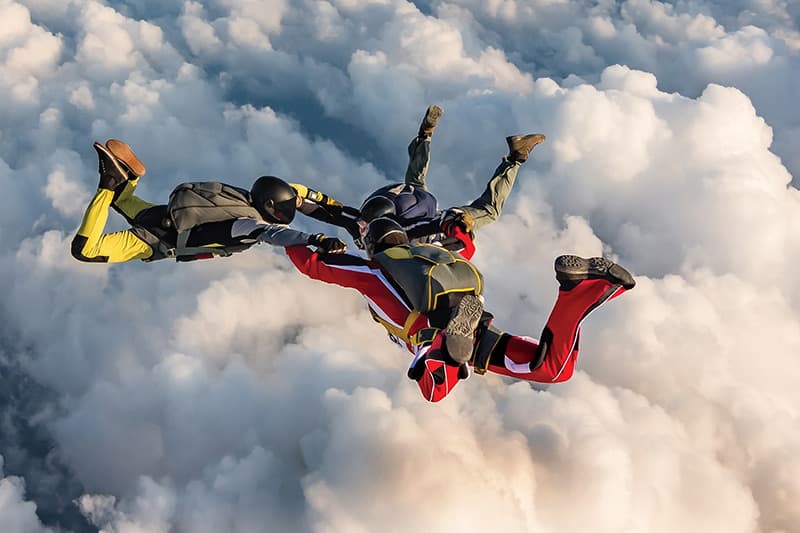Adrenaline in the Sky: When Flying Becomes a Challenge
Flying is one of humanity’s oldest dreams, and with the development of technology, the desire to soar through the skies is no longer out of reach. However, even today, when flights have become routine, there are daredevils ready to turn a simple ascent into a true extreme adventure. From jumps from record altitudes to flights in homemade devices — these are not just spectacles, but challenges to the laws of nature and human potential.
Extreme flights are not just about stunts for show. They are a blend of science, sport, and art. The Czech audience, no stranger to aviation traditions, knows well that flying in difficult conditions requires not only courage but real skill. In recent years, interest in air shows, aerial marathons, and record-breaking flights has grown in the Czech Republic, with social media increasingly showing footage from drones, hot air balloons, and even jet suits.
Records That Conquered the Skies
One of the most impressive achievements in the world of extreme flights remains Felix Baumgartner’s jump from over 39 kilometers. This record was set in 2012 and is still considered a milestone in high-altitude jumps. The experiment not only astonished viewers but also marked a scientific breakthrough: researchers studied how the human body responds to G-forces and speeds exceeding that of sound.
Following Baumgartner, other individuals set their own records. In 2019, Frenchman Franky Zapata crossed the English Channel on his invention — a flying board that reached speeds up to 170 km/h. This was the first flight of its kind, proving that compact flying devices are not fantasy, but reality. Despite technical difficulties, the success sparked great interest among engineers and military experts worldwide.
While the Czech Republic may not often feature in international headlines, it has its own proud moments. In 2023, an amateur pilot from Moravia completed a nonstop solo flight on a powered hang glider from Brno to the Croatian coast, covering more than 700 kilometers. This route, crossing multiple countries, became a symbol of combining adventurous spirit with engineering precision.
The Most Unusual Adventures in the Air
Extreme flights aren’t always about chasing numbers. Sometimes, it’s all about the uniqueness of the idea. In India, for instance, a wedding was held in 2021 at an altitude of 6,000 feet — the couple held the ceremony in the basket of a hot air balloon floating above the mountains. In Japan, an entrepreneur took to the skies on a drone made from eight propellers and a chair frame, proving that the limits of possibility are defined by imagination.
In Europe, “aerial quests” are becoming increasingly popular — multi-day flights in small aircraft with tasks and endurance challenges. Czech teams regularly take part in such competitions as the Air Rally Cup, where routes span up to ten countries. These journeys demand precise navigation, strong crew coordination, and a thorough knowledge of aviation law.
Balloon flights in extreme climates also deserve special attention. In Iceland, for example, flights over volcanoes and glaciers are organized, where temperatures can change rapidly, and wind gusts can easily knock a balloon off course. These flights are not just tourist attractions but a way to explore hard-to-reach natural areas. For Czech adventurers interested in polar regions, such expeditions are a true test of courage.
Danger as Part of the Flight
An extreme flight always comes with risk. Even when all safety precautions are followed, unpredictable weather, technical malfunctions, and human error can lead to accidents. History has seen many tragic incidents, underscoring how seriously preparations must be taken.
In many countries, including the Czech Republic, participating in aerial events requires not just a pilot’s license but also special flight permits. Organizers must coordinate routes in advance, consider air corridors, and consult weather forecasts. This is especially crucial in mountainous areas — the smallest deviation can be costly.
Nevertheless, demand for such flights is growing. More and more Czech tourists are choosing to gift not just a tour, but a flight in a glider, hang glider, or even a training session with an aerobatic team. For many, this is a way to challenge themselves, overcome a fear of heights, and gain unforgettable emotions.
New Technologies – New Horizons
With the development of drones, electric motors, and autopilot systems, the possibilities for extreme flights continue to grow. Now, not only professionals but also enthusiasts with minimal training can take to the skies. Compact paramotors and lightweight gliders are becoming popular among young people, especially in areas with beautiful landscapes like South Moravia or the Krkonoše Mountains.
Engineers are working to make flights not only thrilling but also safe. Czech companies such as Evektor and BRM Aero are actively developing light aircraft models with improved performance. In the coming years, we’re likely to see more flights where technology and humans work in tandem — from autonomous air taxis to hybrid gliders controlled by AI.
